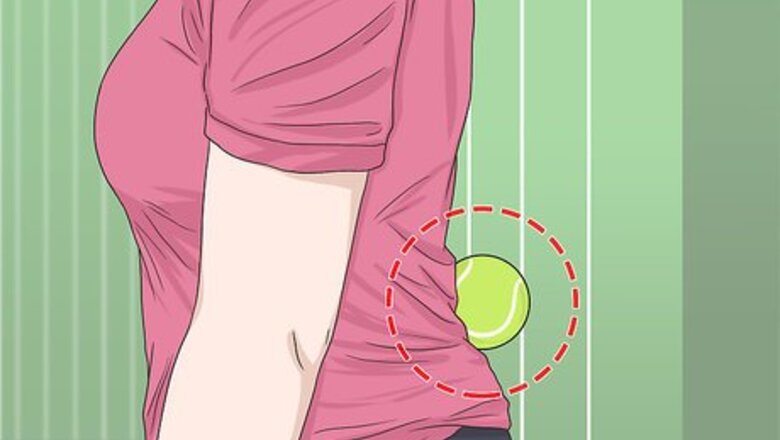
views
Doing a Massage on Yourself
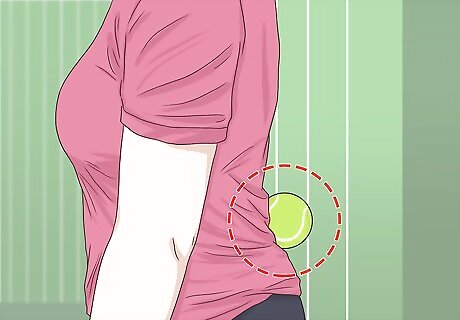
Place a tennis ball or foam roller between your back and a wall. Purchase a tennis ball or foam roller specifically designed for massage at a sporting goods or department store. Lean up against a wall and place the ball or roller over the area in your lower back that is sore. You should feel some pressure on the tight area where the ball or roller is pressing in. Do not continue if the area is extremely painful or if the pain is coming from a bone. Seek professional medical attention if you experience extreme pain upon placing pressure on your lower back.
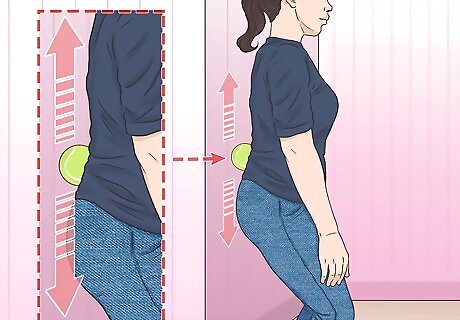
Roll on the area that hurts with the ball or roller. Move your hips and bend your knees to roll the ball or roller over the sore areas of your lower back. Continue leaning heavily into the ball or roller against the wall to apply pressure to the areas. If you're using a roller, roll the device up and down along the muscles beside your spine. Try to get most of your body weight into that sore area where you have the ball or roller, but stop or decrease the pressure if the area becomes more painful.
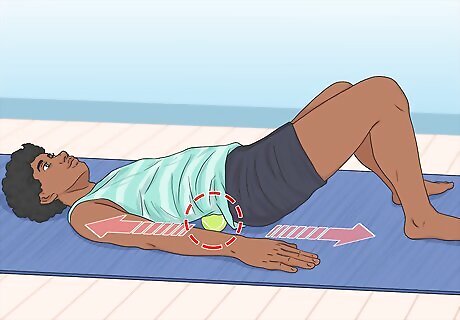
Try the ball or roller on the floor to get added pressure. To apply more pressure into your muscles, lay down on your back on the floor and place the ball or roller under the sore areas. Bend your knees and use your feet to move your body so that the ball or roller slides over the sore muscles to loosen them.
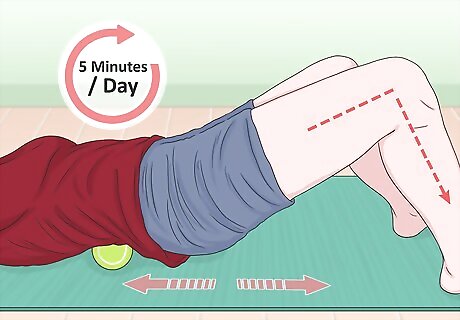
Use the ball or roller massage technique for no more than 5 minutes per day. Don’t spend more than 5 minutes a day massaging your back with a tennis ball or foam roller. Doing so can increase your soreness. Allow the muscles time to recover from the massage, and try again the next day if they are still tight or sore.
Massaging Someone Else
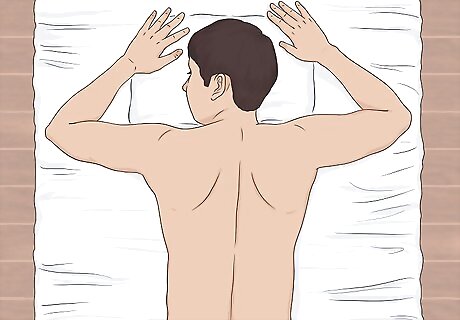
Have the person lay down flat on their stomach. Choose a firm, comfortable surface for your work area, such as a firm bed, padded floor, or massage table. Ask the person to lay flat on their stomach, turning their head to either side and positioning their arms however they are most comfortable. Create a comfortable, calming environment by diffusing relaxing essential oils, like lavender, chamomile, or frankincense. Also, turn the lights down low and keep the room nice and warm.
Take a moment to center yourself before the massage. Take a few deep breaths to help yourself relax, and try to clear your mind of any thoughts. That way, you'll be able to be fully present and help set a relaxing tone for your clients.
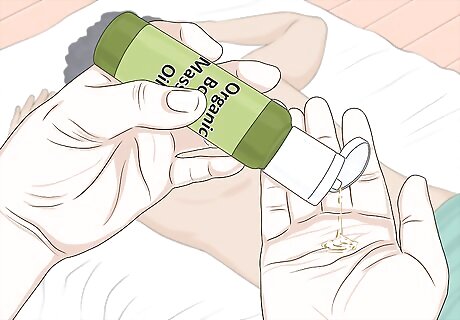
Squeeze a few drops massage oil onto your hands if the person likes it. Massage oil helps reduce friction on the skin and generally makes the massage more comfortable. Some people don’t like oil during a massage, however, so ask the person if it’s okay to use some oil. You can use oil that’s specially designed for massages, or another common oil such as olive, coconut, or almond. Start with a small amount of oil and use more during the massage if you need it. Consider using an oil with a fragrance they like, like lavender oil.
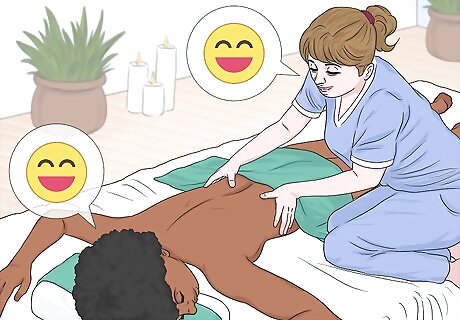
Ask them if they are comfortable with the amount of pressure you're applying throughout the massage. Tell them that if anything hurts, you will back off and apply less pressure. If you’re not applying enough pressure, you can press harder if they ask you to. Keep checking in with the person by asking, “How does this feel? Is this enough pressure or too much?” If the person experiences severe pain during the massage, you should stop the massage and advise them to seek professional medical care.
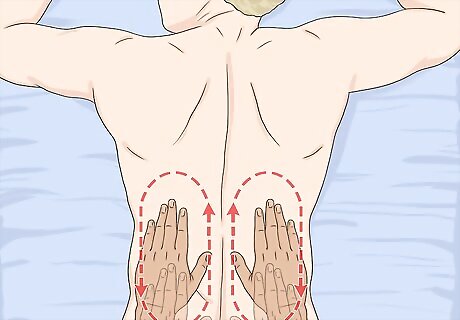
Apply upward pressure from the low back outside the spine with both hands. Place your whole hands flat on the person’s lower back near their hips, on either side of their spine. Press upward firmly with your entire hand toward their middle back, then lift your hands and do it again, starting at their lower back. Do not press down directly on their spine or hip bones; apply pressure to muscles only. This technique is called effleurage and is commonly used to start loosening muscles during a massage. Continue this technique for 5-10 minutes. EXPERT TIP Eric Christensen, DPT Eric Christensen, DPT Physical Therapist Eric Christensen is a Physical Therapist based in Chandler, Arizona. With over a decade of experience, Eric works in both orthopedic and neurological fields and specializes in custom orthotic prescription and casting, vestibular reprogramming, and manual therapy. He holds a Bachelor’s degree in Exercise Science with a focus in Sports Medicine from Colorado State University and a Doctor of Physical Therapy from Regis University. In practice, Eric takes a developmental approach to rehabilitation utilizing the Selective Functional Movement Assessment. He uses functional movement patterning and manual therapy to return patients to prior levels of function. Eric Christensen, DPT Eric Christensen, DPT Physical Therapist Be careful when massaging someone's back. When massaging someone's back, avoid pressing too hard on bones, joints, or the spine itself. Instead, focus on kneading the soft tissues around them. Start very gently, then slowly increase pressure while frequently asking them for feedback.
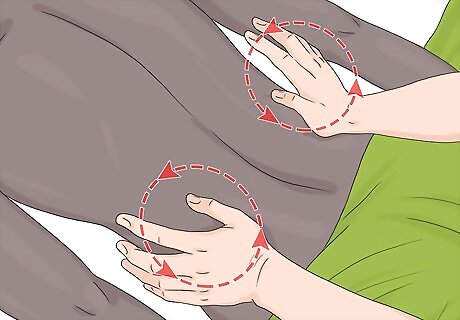
Use circular pressure with the heels of your hands near their hips. Start by placing the heels of both hands at the bottom sides of the person’s spine, near their hips. Move your hands outward and upward in a circle, applying pressure around their hips and lower back. Move up and down the sides of their spine slightly, doing the circles in the areas that are sore for the person. Do not press directly on their spine or any other bones. Continue this part of the massage for 5 minutes, or less if the person prefers.
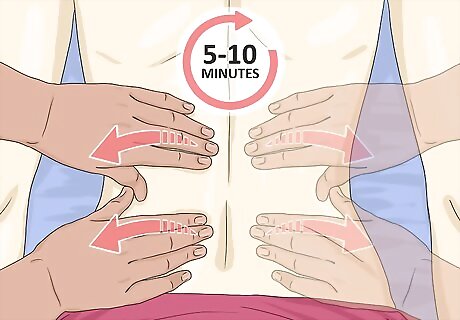
Use your fingertips to press from the center of the spine out toward their hips. Find the base of the person’s spine with your fingertips. Move your fingertips to the outside of their spine and press down, then move your fingers outward along their hips while applying pressure. Do 1 side at a time for this part, using both hands if you like. This technique massages tightness out of the tops of the gluteus muscles that often cause lower back pain. Continue this part of the massage for no more than 5 minutes.
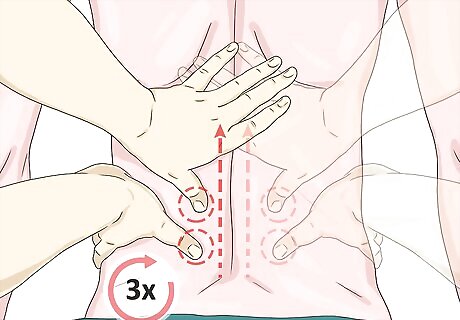
Slide your thumb along the long muscles beside their spine in an upward motion. Find the long, sausage-shaped muscles that run along the person’s spine. Use your thumb to apply firm pressure to the outer sides of the muscle, sliding it up along the muscle and stopping at the middle back. Do each side of the spine 3 times. Using only your thumbs increases the amount of pressure going into the muscles of the person’s back.
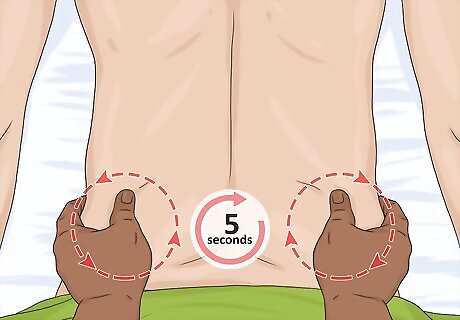
Use your thumb to relieve pressure in tight or sore areas. Ask the person if there are specific areas that are feeling tight and in need of attention. Have them show you exactly where their pain is by pointing to the spot. Use your thumbs to apply firm pressure to these areas for about 5 seconds each, making tiny circular movements in the muscle to help loosen it. This is called deep-tissue or trigger-point massage. Be sure you are not pressing on bones when you press these tight areas. Stop immediately if the person experiences increased pain during this part of the massage. Clair Davies Clair Davies, Massage Therapist Gentle lower back massage releases deep muscular trigger points, unlocking interconnected tension for natural whole-body pain relief. Overuse, poor posture and injuries cause complex lower back muscles supporting the spine to form painful knots that radiate pain; massage properly applied can unwind this knotted tension, benefiting the entire body.
















Comments
0 comment